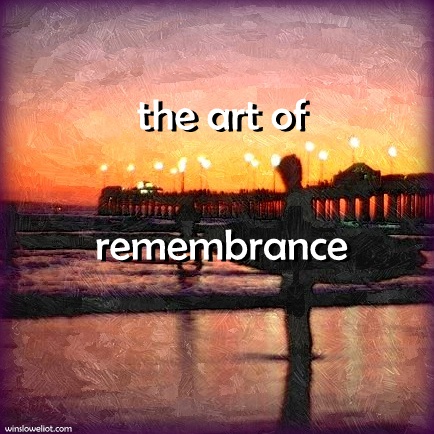
Stillness 10-23: How do you choose to remember? Are you dreamy and nostalgic? What you remember makes a difference: If you’re remembering a blissfully hot summer evening by the pier, you might be seriously dreamy and nostalgic, so much so you might want to cry. If you’re remembering someone who’s died, you might choose to say a grateful prayer.
The difference between nostalgia and reverence is a profound one. The words “I remember” can imply either or both. The word “remember” originates from memorari which means “to be mindful of” or memor which means “mindful.” Re, of course, means “again.” So when we remember, we are actually being re-mindful. Even if we remember a long-lost love or a diamond necklace that had to be pawned, we can do it in a way that is more like conscious contemplation than sad regret. Through bringing the memory fully to consciousness and imbuing it with gratitude we allow ourselves to be re-mindful.
In another sense, “re-member” means to put our limbs back together, to reintegrate ourselves. There are many esoteric myths and legends in which that’s the core experience and message of the tale, as well as shamanic rituals and journeys that explore soul retrieval on a profound level. Reintegration is also part of mindfulness, because mindfulness creates a space in which our conscious awareness is placed fully on the present: all that happened in the past and the limitless potentials of our future are now. That’s what mindfulness teaches us.
We can feel even joy in remembering, simply by adjusting the lens through which we choose to do it. But no matter how we choose to remember, gratitude lies at the core of lifting remembrance into meaningful and spiritual transformation. Gratitude is the heart and the art of mindfulness, and mindfulness is the core of remembrance.
